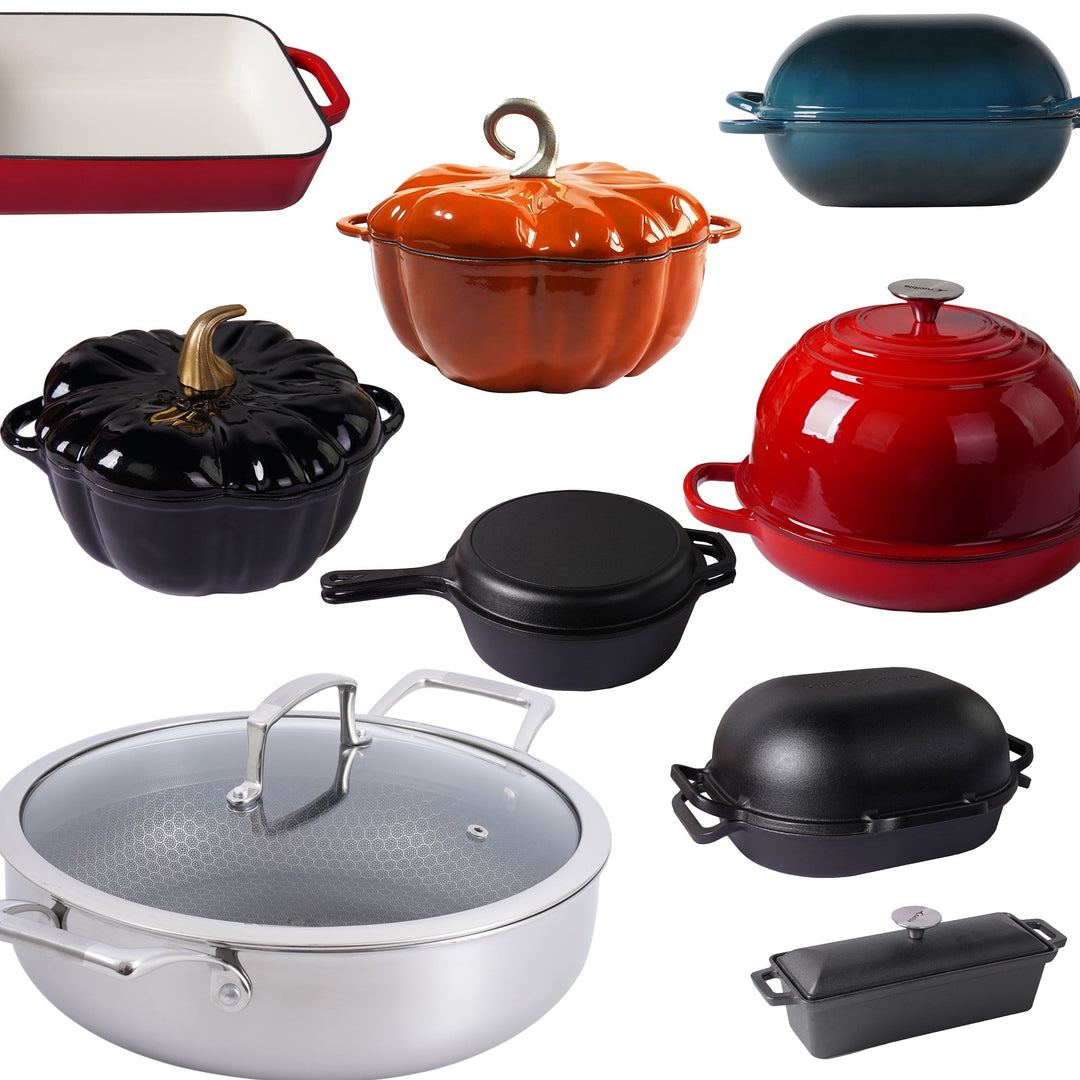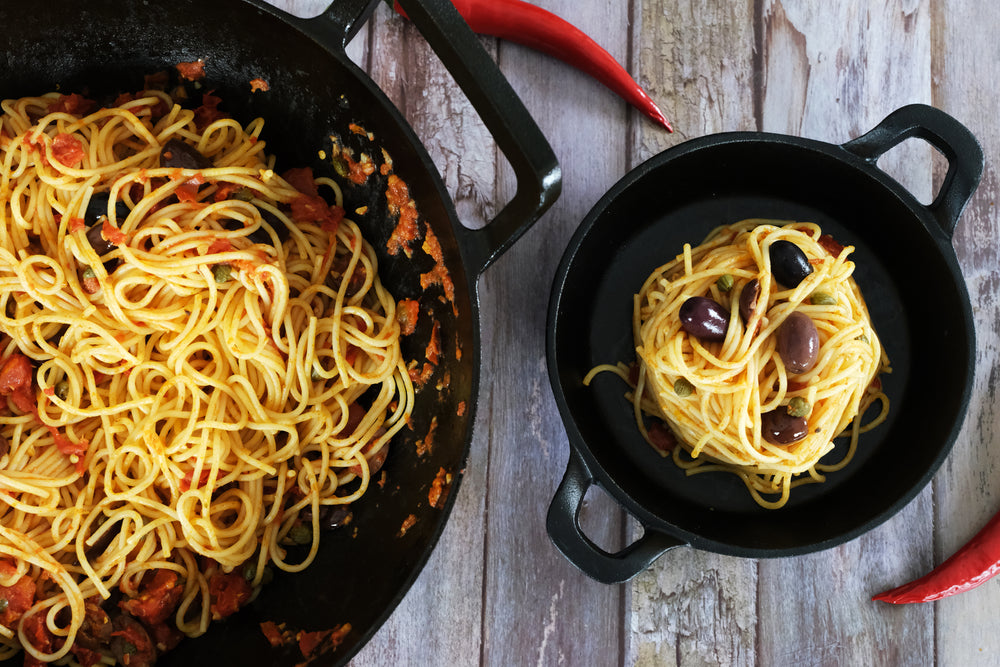Sartén de Hierro Fundido Balti Dish vs. Wok de Hierro Fundido: Revelando el Estilo Distinto de los Utensilios de Cocina

Cuando se trata de cocinar, las herramientas adecuadas pueden marcar toda la diferencia. Dos opciones populares entre los entusiastas culinarios son el plato balti de hierro fundido y el wok de hierro fundido. Ambas opciones de utensilios de cocina tienen sus propias características únicas, que se adaptan a estilos y platos específicos. En esta publicación del blog, exploraremos las diferencias entre un plato balti de hierro fundido y un wok de hierro fundido, arrojando luz sobre su estilo distintivo en la cocina.
Forma y Diseño:
La primera diferencia notable entre un plato balti de hierro fundido y un wok de hierro fundido radica en su forma y diseño. Un plato balti típicamente presenta un fondo ancho, poco profundo y redondo con lados altos y en pendiente. Por otro lado, un wok tiene un fondo profundo y redondeado con lados empinados y en pendiente. El fondo ancho del plato balti permite un mayor contacto de superficie con el calor, mientras que los lados profundos y en pendiente del wok facilitan el volteo y la mezcla de ingredientes sin esfuerzo.
Estilo de Cocina:
El estilo de cocina asociado con cada recipiente es otro aspecto que diferencia al plato balti de hierro fundido y al wok de hierro fundido. Un plato balti se usa comúnmente para preparar currys balti, una cocina tradicional del sur de Asia caracterizada por el salteado rápido de especias, verduras y carne a fuego alto. Los platos balti sobresalen en retener y distribuir el calor de manera uniforme, lo que los hace ideales para lograr los sabores y texturas únicos de la cocina balti.
Por otro lado, el wok de hierro fundido es sinónimo de salteado asiático. Sus lados altos y en pendiente lo hacen perfecto para el volteo y mezcla rápida de ingredientes, asegurando una distribución uniforme del calor y preservando el crujido natural y la frescura de las verduras. El diseño del wok permite diferentes zonas de calor, lo que permite a los chefs sellar, freír, cocinar al vapor o freír en profundidad con precisión.
Distribución y Retención del Calor:
Los utensilios de cocina de hierro fundido son reconocidos por su excepcional capacidad de distribución y retención del calor. Sin embargo, los dos recipientes difieren en su rendimiento en este aspecto. El plato balti de hierro fundido, con su base más ancha, proporciona una mayor área de contacto con la fuente de calor, permitiendo una distribución más eficiente del calor en todo el plato. Esta característica asegura una cocción uniforme y previene puntos calientes, resultando en un perfil de sabor bien equilibrado.
En contraste, la forma profunda del wok de hierro fundido concentra el calor en el fondo, facilitando un calor intenso para el salteado. Los lados empinados permiten que los ingredientes se deslicen hacia las áreas más frías mientras mantienen los del fondo muy calientes. Esta distribución controlada del calor permite una cocción rápida mientras se mantienen las texturas y sabores característicos de los platos salteados.
Versatilidad:
Mientras que tanto el plato balti como el wok sobresalen en sus respectivos estilos de cocina, también poseen un grado de versatilidad. Un plato balti de hierro fundido puede usarse para otros métodos de cocción como saltear, hervir a fuego lento o incluso hornear. Su diseño ancho y poco profundo permite un dorado fácil de carnes o verduras antes de cocinar lentamente un guiso o curry. De manera similar, un wok de hierro fundido puede utilizarse para freír en profundidad, cocinar al vapor e incluso hervir debido a su interior profundo y espacioso.
Conclusión:
Cuando se trata de elegir entre un plato balti de hierro fundido y un wok de hierro fundido, todo se reduce a las preferencias personales y a los tipos de platos que disfrutas cocinar. El diseño ancho y poco profundo del plato balti es ideal para currys balti y métodos de cocina versátiles, mientras que la forma profunda y los lados en pendiente del wok sobresalen en el salteado asiático y diversas técnicas culinarias. En última instancia, ambas opciones de utensilios de cocina de hierro fundido son herramientas indispensables en una cocina bien equipada, permitiéndote liberar tu creatividad culinaria con sus atributos únicos.
















Deja un comentario